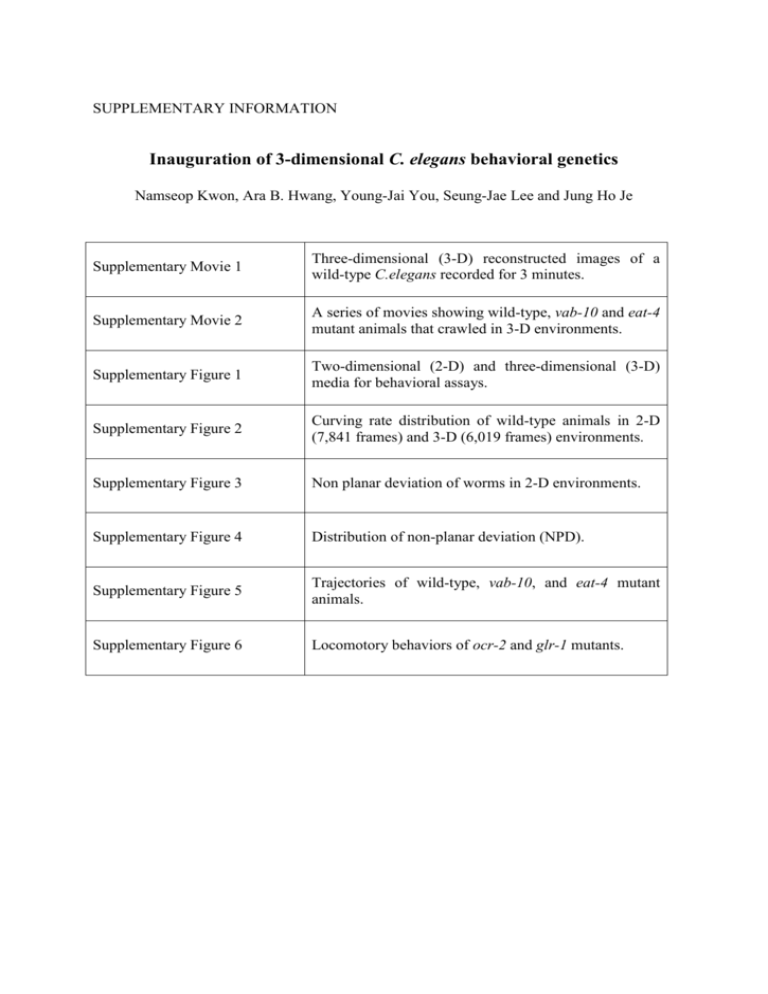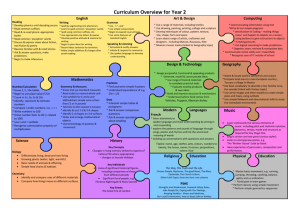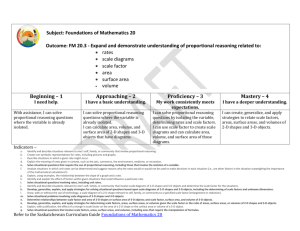Supplementary Figures and Methods
advertisement

SUPPLEMENTARY INFORMATION Inauguration of 3-dimensional C. elegans behavioral genetics Namseop Kwon, Ara B. Hwang, Young-Jai You, Seung-Jae Lee and Jung Ho Je Supplementary Movie 1 Three-dimensional (3-D) reconstructed images of a wild-type C.elegans recorded for 3 minutes. Supplementary Movie 2 A series of movies showing wild-type, vab-10 and eat-4 mutant animals that crawled in 3-D environments. Supplementary Figure 1 Two-dimensional (2-D) and three-dimensional (3-D) media for behavioral assays. Supplementary Figure 2 Curving rate distribution of wild-type animals in 2-D (7,841 frames) and 3-D (6,019 frames) environments. Supplementary Figure 3 Non planar deviation of worms in 2-D environments. Supplementary Figure 4 Distribution of non-planar deviation (NPD). Supplementary Figure 5 Trajectories of wild-type, vab-10, and eat-4 mutant animals. Supplementary Figure 6 Locomotory behaviors of ocr-2 and glr-1 mutants. Movie Legends Supplementary Movie 1. Three-dimensional reconstructed images of a wild-type C. elegans recorded for 3 minutes. Supplementary Movie 2. A series of movies showing wild-type, vab-10 and eat-4 mutant animals that crawled in 3-D environments. The images were recorded with a fast frame rate of 13 frames/s, while manually tracking worms. Supplementary Figure 1 Supplementary Figure 1. Two-dimensional (2-D) and three-dimensional (3-D) media for behavioral assays. Gelatin-cover glass sandwich (<100 m) (a) and gelatin filled square cuvettes (>2 cm3) (b) were used as 2-D and 3-D environments, respectively. Supplementary Figure 2 Supplementary Figure 2. Curving rate distribution of wild-type animals in 2-D (7,841 frames) and 3-D (6,019 frames) environments. (a) Both of the curving rate distributions from 2-D and 3-D experiments showed one large peak near 0° and one small peak near 180°, representing forward run and reorientation, respectively. (b) A magnified plot showing the small peaks in panel (a). Supplementary Figure 3 Supplementary Figure 3. Non-planar deviation of worms in 2-D environments. Worms crawling in 2-D environments were simulated by giving a thickness (60 m, the average thickness measured from 15 worms) to 2-D images, as demonstrated in (a). (b) The least of the ratio of R3 to R1 obtained from the simulation of 2-D images and from the reconstructed 3-D images. The values from 2-D simulation are comparable to those from reconstructed 3-D images, indicating that the least values originated from the thicknesses of the worms. (c). Non-planar deviations (NPDs) of the worms in 2-D and 3-D conditions. The NPDs obtained from 3-D reconstruction are one order higher than those from 2-D simulation, suggesting that the NPDs represent an extra degree of freedom of movements in 3-D environments. Supplementary Figure 4 Supplementary Figure 4. Distribution of non-planar deviations (NPDs). NPD distribution of wild-type worms moving in 3-D environments. A majority (99%) of the values were distributed between 0~0.3. Supplementary Figure 5. Supplementary Figure 5. Trajectories of wild-type, vab-10, and eat-4 mutant animals. The representative trajectories of wild-type, vab-10(e698) and eat-4(n2474) animals in 2-D (a-c) and 3-D (d-f) environments for one minute. vab-10 encodes two isoforms of spectraplakins, vab-10A and vab-10B, whose inhibition causes the detachment of cuticle from the muscles with abnormal forms of fibrous organelle and increases epidermal thickness, respectively1. Since the complete loss of vab-10 leads to embryonic lethality, we used a hypomorphic mutant allele e698 that contains a missense mutation in the vab-10A isoform, causing a minor head morphogenesis defect and immobile head2. eat-4 encodes a homolog of a mammalian brain-specific Na+-dependent inorganic phosphate cotransporter 1 required for glutamate uptake and glutamatergic neurotransmission3. Supplementary Figure 6. Supplementary Figure 6. Locomotory behaviors of ocr-2 and glr-1 mutants. (a-b) ocr2(ak47) mutants showed increased curving rates for forward runs (a) and non-planar deviations (b) compared to wild-type animals. (c-d) ocr-2(ak47) and glr-1(n2461) mutants displayed comparable speeds in 2-D and 3-D conditions (c) but significant reduction in the reorientation frequencies under 3-D conditions compared with those in 2-D conditions (d) (n = 18 and 14 for wild type; n = 12 and 13 for ocr-2; and n = 26 and 29 for glr-1 mutants in 2D and 3-D conditions, respectively). Statistical analysis was performed to compare mutants with wild-type animals (a-b) or between 2-D and 3-D data (c-e). Error bars represent SEM (*P <0.005, **P<0.001, ***P<0.0005, Mann-Whitney U-test). References 1. Bosher, J. M. et al. The Caenorhabditis elegans vab-10 spectraplakin isoforms protect the epidermis against internal and external forces. J. Cell. Biol. 161, 757–768 (2003). 2. Hodgkin, J. Male phenotypes and mating efficiency in Caenorhabditis elegans. Genetics 103, 43–64 (1983). 3. Lee, R. Y. N., Sawin, E. R., Chalfie, M., Horvitz, H. R. & Avery, L. EAT-4, a homolog of a mammalian sodium-dependent inorganic phosphate cotransporter, is necessary for glutamatergic neurotransmission in caenorhabditis elegans. J. Neurosci. 19, 159– 167 (1998).







